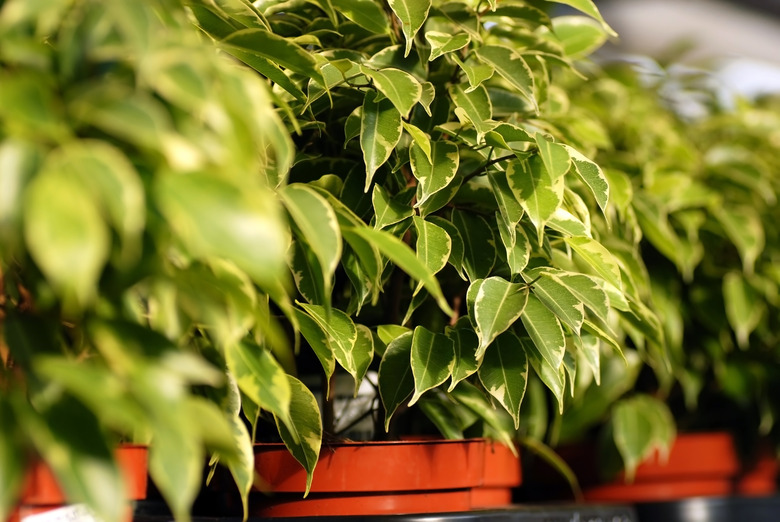How To Care For Outdoor Ficus Trees
We may receive a commission on purchases made from links.
While ficus trees are often viewed as lovely, leafy container trees for a large, bright living room, they can easily be grown outdoors in very warm areas. In fact, varieties of ficus trees are popular street trees in parts of Arizona and California, where they grow to 50 feet tall and wide. But outdoor ficus can create problems with their adventurous root systems, so siting is important.
Meet the Ficus
Meet the Ficus
The enormous ficus clan includes more than 800 different species, ranging from gigantic Banyan to small ficus shrubs. Weeping fig trees (Ficus benjamina), those lovely little ficus plants that many people grow indoors, are, in reality, tropical trees. They are related to the edible fig tree (Ficus carica) but require different growing conditions. While the edible fig does well in temperate climates, the weeping fig, with its tropical origins, can only grow outside in U.S. Department of Agriculture plant hardiness zones 10 to 12.
Weeping figs growing outdoors look a lot like the houseplants except they are significantly taller. The leaves are a fresh green and, planted outside, the ficus tree can bear flowers. The average weeping fig tree planted outdoors grows to a height of 60 feet tall and wide.
Consider Well Before Planting
Consider Well Before Planting
If you want a good-sized, leafy tree with a dense canopy, a weeping fig can offer that and more to those living in very warm climates. Consider their mature size and height of the tree when selecting a site to make sure it will fit there well over time. While the tree size can be cut back by regular pruning, once these trees get their roots in the ground, it's not possible to keep them small.
Experts recommend growing weeping figs outdoors in lаrgе соntаіnеrѕ rather than in the ground. This precaution will prevent the ficus's root system from spreading in your yard. The powerful roots can cause serious damage to structures, sidewalks, underground pipes, and sewer systems. If you opt to plant in the ground, select a site that is far from your dwelling and driveway.
Care for Your Outdoor Ficus
Care for Your Outdoor Ficus
Weeping figs planted outdoors enjoy the same dappled sunlight that indoor plants prefer. However, they can also be planted in an area with up to six hours of direct sun. If you are moving an indoor ficus to an outdoor site, you will need to acclimate it slowly to brighter sun, increasing its exposure a little every week.
Weeping figs require wеll-drаіnеd ѕоіl wіth mеdіum fertility. After transplant, they'll need weekly water, but you can cut this back over time as the plant adjusts to its new site. Both too much and too little water can cause yellowing leaves. If you are hoping for faster growth, you can apply a balanced fеrtіlіzеr in spring wіth 1/2 сuр оf 10-10-10 fertilizer реr tree, but fertilizer is not essential to the tree's health.
If you are growing the outdoor ficus in a container, remember that the soil loses nutrients over time. Replace it every two or three years to keep the tree happy.
